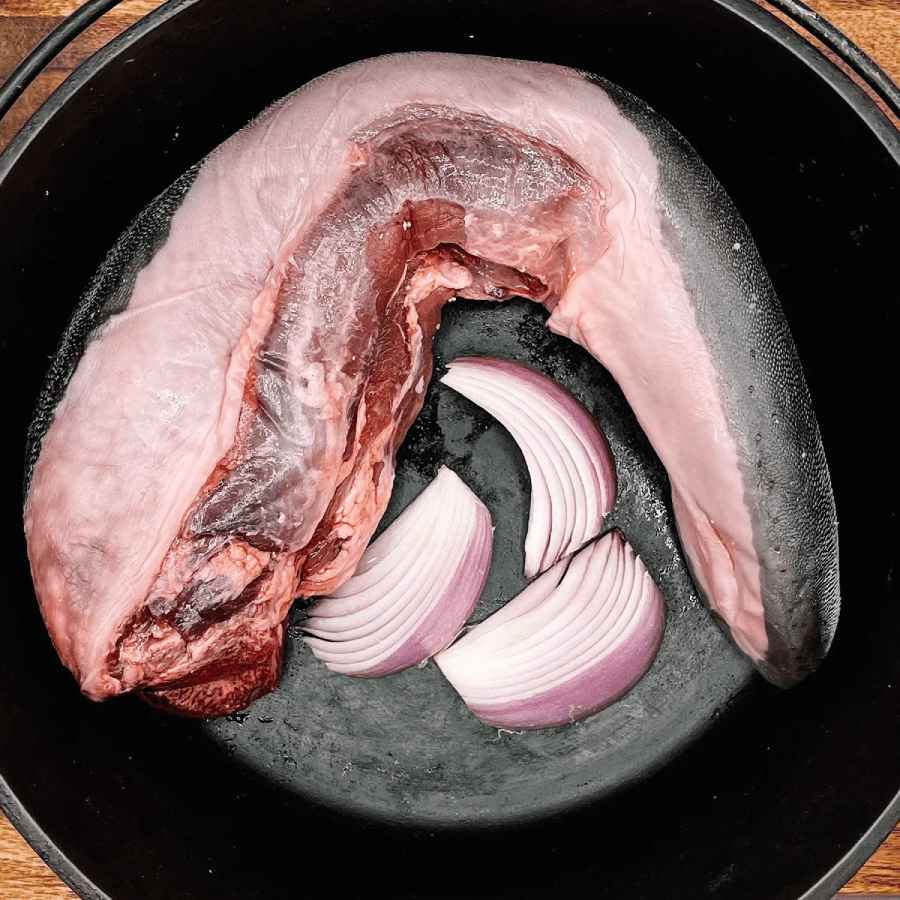
If you’ve never tried beef tongue, you’re in for a surprise—it’s one of the most flavorful, tender cuts you can cook. And when it’s dry-aged? It reaches a whole new level of richness, making it a must-try for adventurous home cooks and beef lovers alike.
Why Dry-Aged Beef Tongue?
Dry aging enhances the deep, beefy essence of tongue, intensifying its umami notes while tenderizing the meat. The result? A melt-in-your-mouth experience that’s unlike any other cut.
How to Prepare Dry-Aged Beef Tongue
Cooking beef tongue may seem intimidating, but it’s simpler than you think. Follow these steps to unlock its full potential:
1. Slow Simmer for Tenderness
Place the tongue in a large pot and cover with water.
Add aromatics like onion, garlic, bay leaves, and peppercorns.
Simmer gently for 3-4 hours until fork-tender.
2. Peel & Slice
Once cooled slightly, peel off the outer skin—it will come off easily after simmering.
Slice thinly for sandwiches, tacos, or salads, or cube it for stews.
3. Elevate with a Sear or Smoke
For crispy edges, pan-sear slices in butter or beef tallow.
For smoky depth, finish on a smoker at 225°F for an hour.
Serving Ideas for Dry-Aged Beef Tongue
Tacos: Toss with lime juice, cilantro, and onions for an authentic taco experience.
Cold Cuts: Chill and slice thin for an incredible charcuterie board addition.
Ramen or Pho: Add to brothy soups for a rich, velvety texture.
Grilled or Braised: Marinate and grill for a unique take on BBQ.
Why You Should Try Beef Tongue
If you love dry-aged beef, exploring lesser-known cuts like tongue is a natural next step. It’s deeply beefy, incredibly tender, and a great way to use the whole animal in a delicious, sustainable way. Give it a try—you just might discover your new favorite cut!
Tell me if you do!
XOXO,
Louisa



Leave a comment
Also in Farm Family Recipes
The Church Method for Perfect Beef Roasts
There is a whole world of cooking that never made it into cookbooks. It lives in church basements and community halls where somebody’s aunt has been feeding a crowd for decades and never once owned a digital thermometer. The “church basement method” is simple. Multiply the weight of your roast by time, set the oven to a steady low heat, and follow one important rule. Don’t peek.
It works with everyday beef roasts like sirloin tip, chuck, rump, and top round, which means you do not need a prime rib to put something special on the table.
Keep reading
Slow Cooker Meals for Busy Farm Nights
When chores run late and the weather turns cool, nothing beats a slow cooker meal waiting at the end of the day. Here are our favorite Creamery Creek cuts and easy ideas for fall and winter suppers that cook themselves while you work.
Keep reading
Sweet & Tangy Holiday Meatballs (Farmhouse Appetizer Recipe)
There’s always that one dish that disappears first at every holiday party and these little meatballs are it. Made with our own Creamery Creek Meatball Mix (a blend of dry-aged beef, Duroc pork, and just the right touch of onion), this recipe brings that cozy, sweet-and-smoky flavor everyone loves. A quick toss in sweet fruit jam and BBQ sauce blend, a brush under the broiler, and you’ve got the perfect farmhouse appetizer for the season.
Keep reading